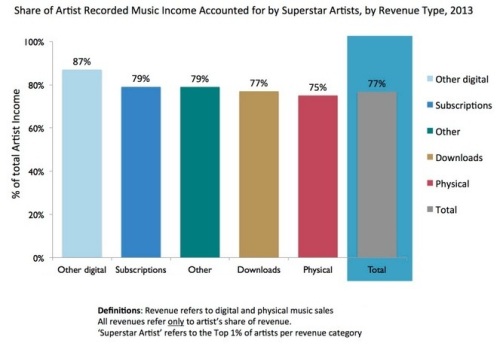Surging Sales? Independent Artists Are Still Being Marginalized…
by Sheme Jobs
Last week, we reported that fan-created videos are getting more traffic than official artist videos. Now, there’s another eye-popping stat: according to data just shared by Tunecore, indie artist revenues are growing four times as fast as the industry average. Tunecore, one of the largest digital distributors for indie and unsigned artists alongside services like ReverbNation and CDBaby, has a dataset that is difficult to ignore.
So what’s wrong with this picture?
Despite all the heady growth among indies, mainstream artists are completely and utterly eclipsing independent artists overall. According to a recently-released study by MIDiA Consulting, the top 1% of artists are making 77% of all recording revenues.
Counterintuitively, mainstream artists are now commanding an even greater share of digital formats.
 There are different ways to define ‘independent,’ but smaller artists seem more marginalized than ever. Tunecore, for all its heft in the indie and unsigned world, still looks like this compared to the broader recording industry.
There are different ways to define ‘independent,’ but smaller artists seem more marginalized than ever. Tunecore, for all its heft in the indie and unsigned world, still looks like this compared to the broader recording industry.




